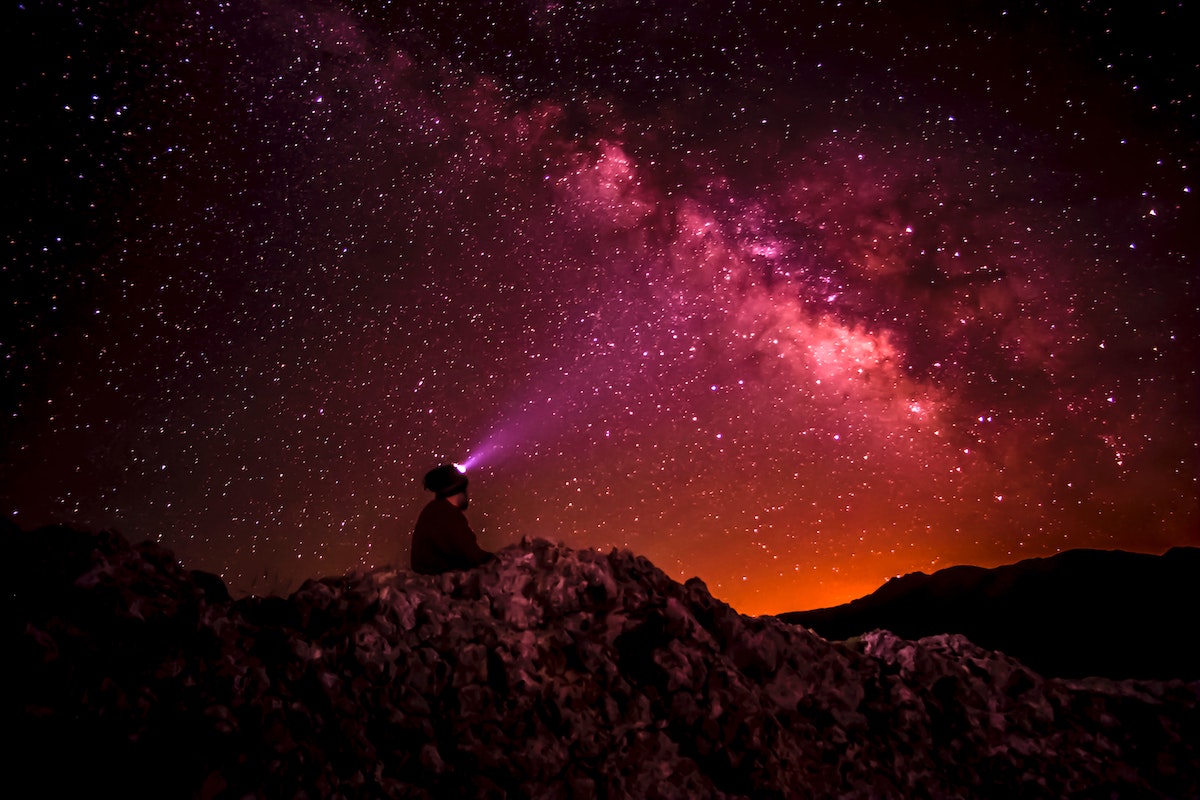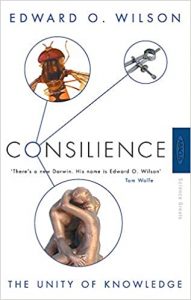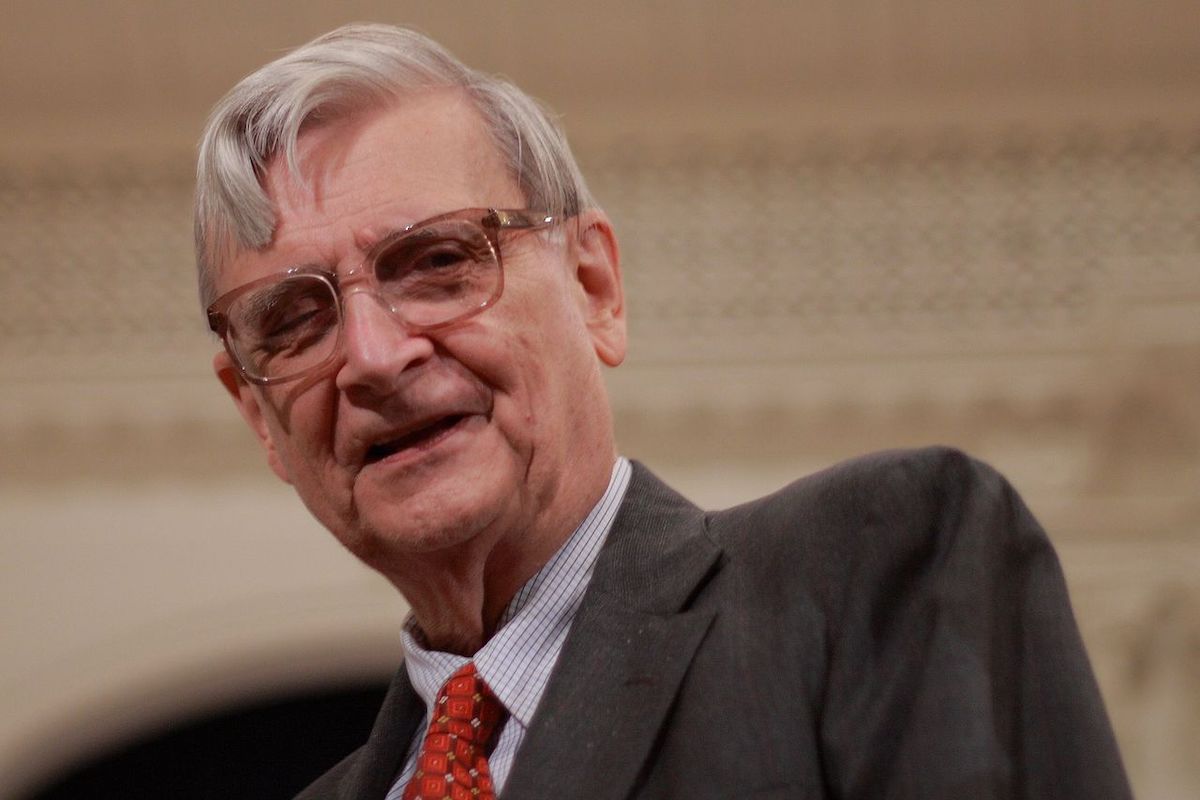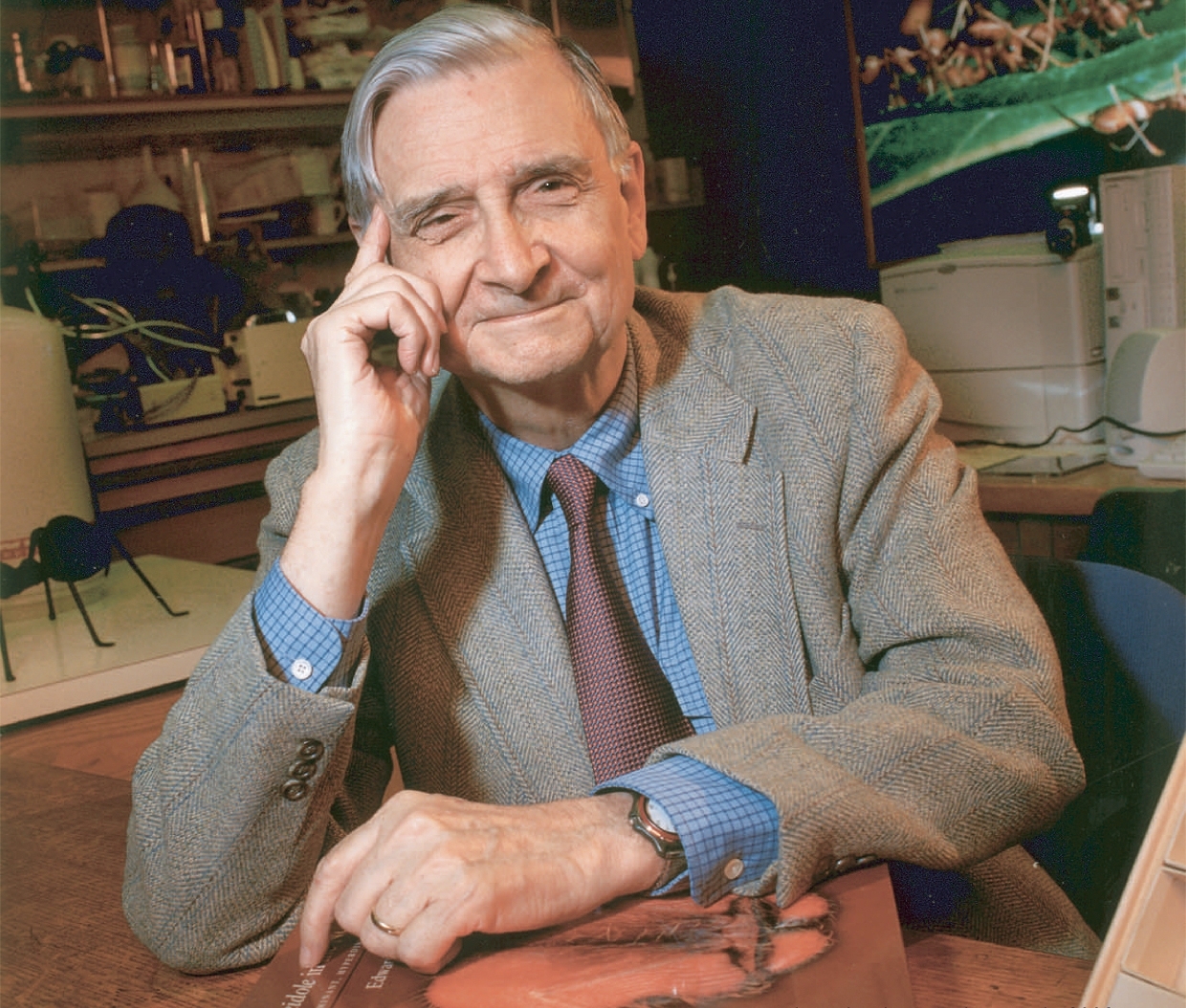Art
At the Intersection of Art and Science: Revisiting EO Wilson’s 'Consilience'
Artists and scientists have a reductionist’s idea of one another and perceive the other as a threat.


I first read EO Wilson’s Consilience in the late 1990s when I was a student in a contemporary literary theory class. The class was taught by a poet, Gerald Locklin, who assigned it as a counterpoint to the postmodern theorists we’d be reading that semester. Wilson makes the case for the unification of knowledge—in the convergence of diverse disciplines such as the sciences and the arts, he says, there is an important story to tell, “about where we came from and why we are here: Neither science nor the arts can be complete without combining their separate strengths. Science needs the intuition and metaphorical power of the arts, and the arts need the fresh blood of science.” As someone who writes poetry, novels, and short stories, I have often drawn inspiration from science and its “fresh blood.” When I teach creative writing classes, I tell my students that aspiring writers not only need to read novels if they want to be a novelist, or poems if they want to be a poet, they need to read a bit of everything to get a fuller sense of the world: history, philosophy, and especially, science.
Within the language of science, a whole world opens up for a writer. I read books about physics not only for their science, but for their poetry, even though I don’t always understand the math. I read books about biology and evolutionary psychology to gain a deeper understanding about what it means to be human, just as I might listen to a Leonard Cohen album, or contemplate a Van Gogh painting, or read a Ralph Ellison novel. I dig for understanding, language, and metaphor within the context of the sciences. I gain a better understanding of the world and I broaden my capacity for astonishment at the universe. In this way, science performs a similar function to the best art—it alters my perceptions, offers a new perspective, and reveals real world knowledge that I can use inside the lab of my imagination.
Artists and scientists have a reductionist’s idea of one another and perceive the other as a threat. Of the mutual suspicion that exists between the two, Wilson writes: “Scholars in the humanities should lift the anathema placed on reductionism. Scientists are not conquistadors out to melt the Inca gold. Science is free and the arts are free…” Nevertheless, that mutual suspicion has always served to divide science and religion, and in the late 20th century, a new suspicion of science emerged from postmodern theorists within the humanities. Many postmodernists rejected the notion of “universals” and saw science as a master narrative with no specific claim to truth—a “kind of discourse,” as Jean François Lyotard argues in his book The Postmodern Condition.
In a chapter entitled, “The Arts and Their Interpretation,” Wilson laments the fall of the text-based New Critical approach to literary theory in favor of the postmodern one, which seeks to deconstruct, to conceive, and to analyze what is left out of a work of art—an interpretation that allows for “personalized commentary,” which often means adding political ideology to the mix and regarding say, the Western canon, as merely reaffirming “the worldview of ruling groups”—Western white males. At the same time, he is charitable towards what he calls “the postmodern hypothesis,” which he defines (albeit somewhat reductively) as an ideology in which “each person creates his own inner world by acceptance or rejection of endlessly shifting linguistic signs. There is no privileged point, no lodestar, to guide literary intelligence.”

Postmodernism’s popularity, he argues, may be explained by the possibility that its “love of chaos” is part of a universal human nature. He sees postmodernism as possessing “a surge of ‘revolutionary spirit’ generated by the real—not deconstructed—fact that large segments of the population… have been neglected for centuries and are only now beginning to find full expression within mainstream culture.” But instead of it having “exploded human nature into little pieces…” he sees its rise as an opportunity to “set the stage for a fuller explanation of the universal traits that unite humanity.” In the sciences, he sees consilience as a necessity in order to gain full insight into human behavior: “Works of art that prove enduring are intensely humanistic. Born in the imagination of individuals, they nevertheless touch upon what was universally endowed by human evolution.” For the scientist, the desire to know the real world, to answer the “how” and “what,” is paramount, while for the artist, it is a desire to take that real world and expose it to imagination, intuition, and experience.
Yet, both draw upon a similar curiosity. The creative spirit remains the same even if the goals and methods are radically different: “Can the opposed Apollonian and Dionysian impulses, cool reason against passionate abandonment, which drive the mood swings of the arts and criticism be reconciled?” Wilson asks. If they can, then there is much to be gained. It is at this intersection between the real and the imagined that truth converges. To have only one, is to have a worldview that is extreme, imbalanced, and ultimately unfulfilling, if not tragic. (Such a tragic imbalance has been explored in plays like Euripides’s The Bacchae and Peter Shaffer’s Equus.)

I’m reminded of one of Walt Whitman’s most famous poems, “When I Heard the Learn’d Astronomer,” a work that is often interpreted as a rejection of science:
When I heard the learn’d astronomer,
When the proofs, the figures, were ranged in columns before me,
When I was shown the charts and diagrams, to add, divide,
and measure them,
When I sitting heard the astronomer where he lectured with
much applause in the lecture-room,
How soon unaccountable I became tired and sick,
Till rising and gliding out I wander’d off by myself,
In the mystical moist night-air, and from time to time,
Look’d up in perfect silence at the stars.
On the surface, it’s easy to see why Whitman’s poem elicits this interpretation. After all, the speaker leaves the astronomy lecture “sick and tired” to go outside and gaze up at the stars. The poet rejects the intellectual for the contemplative, the explanation for experience. The astronomer, in that lecture room, who dissects everything with his equations and proofs and figures and charts and columns and math seems sterile and disconnected from the stars, as well as from the speaker, and therefore, from us. Like most artists, Whitman seems to privilege the subjective and visceral over the “learn’d” (clearly intended as a pejorative). Still, one has to ask, would Whitman’s speaker have looked up at the stars at all on this evening had he not first attended the lecture? Did the lecture, no matter how sanitized and unpoetic it seems, inspire the speaker to gaze into that “mystical moist night-air”?
“An alliance is overdue,” writes Wilson. I once visited the Mauna Kea observatory in Hawaii. I’d taken part in a small tour group which brought us up to the top of the volcano. At one point, near the top, but before the lack of oxygen would affect our eyes, we stopped and got out of the van to look up at the sky. The tour guide, an amateur astronomer, told us a story about a time she’d had an astrophysicist as part of her tour, and when she’d pointed to a particular star cluster (the name of which I’ve forgotten), he said, “Oh, that’s where it is. I wrote my dissertation on it.” She was shocked to learn he couldn’t locate it in the sky, but that all his research had been conducted in a laboratory. This exchange reminded me of a scene in the movie Contact based on Carl Sagan’s novel, in which Dr. Ellie Arroway, an astronomer played by Jodie Foster, is sent through a wormhole. As she looks out of the window on her journey, she says, “They should have sent a poet.” Be that as it may, you still needed the scientists and engineers to build the vessel.






